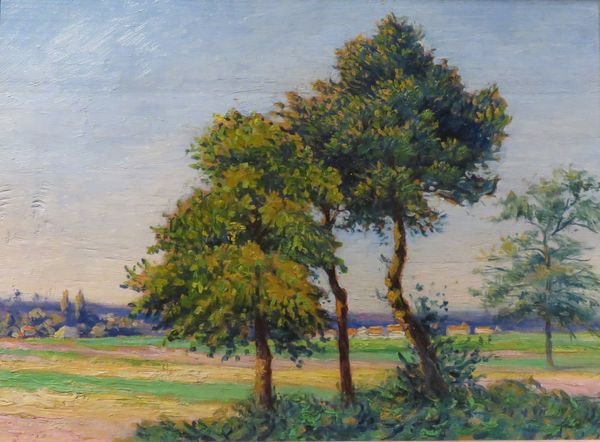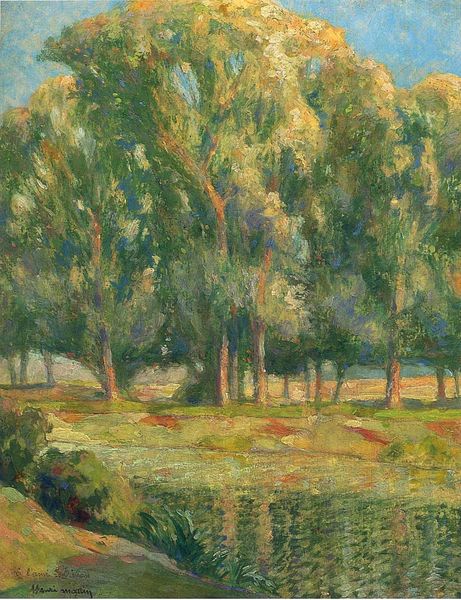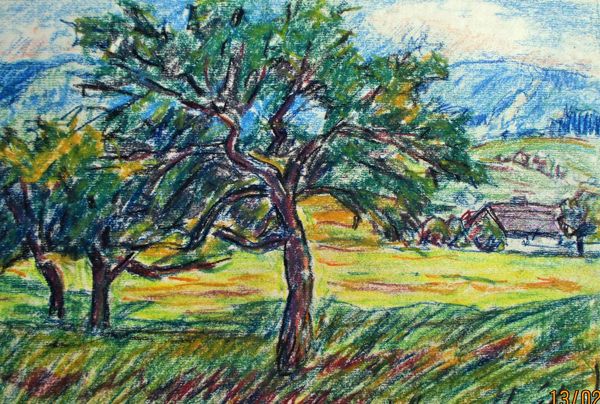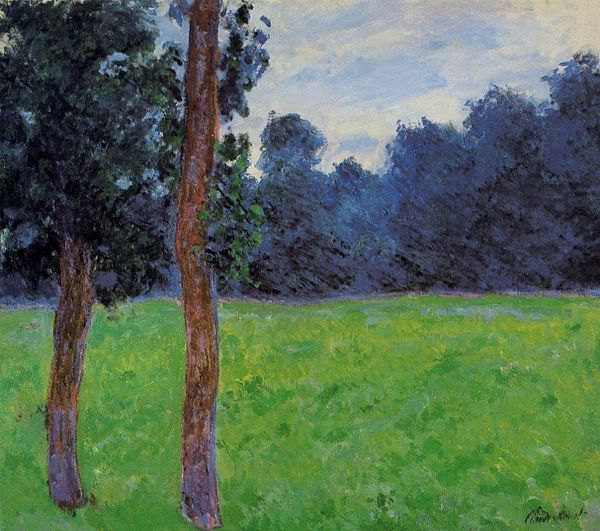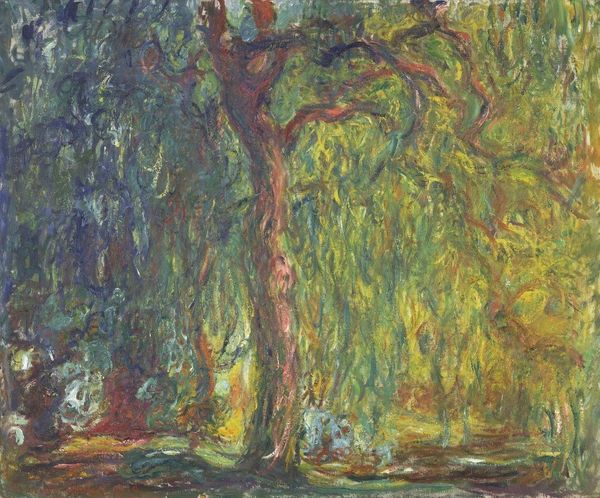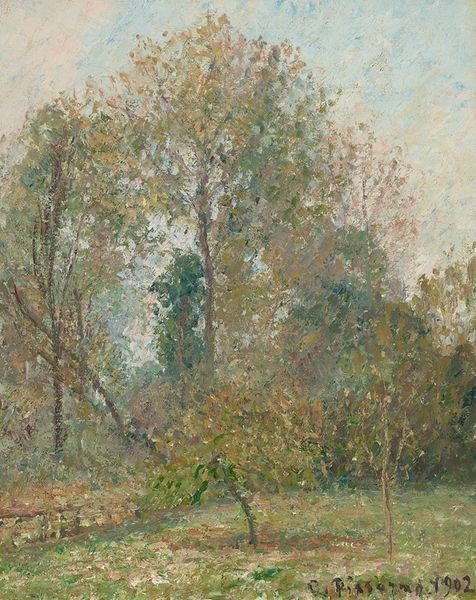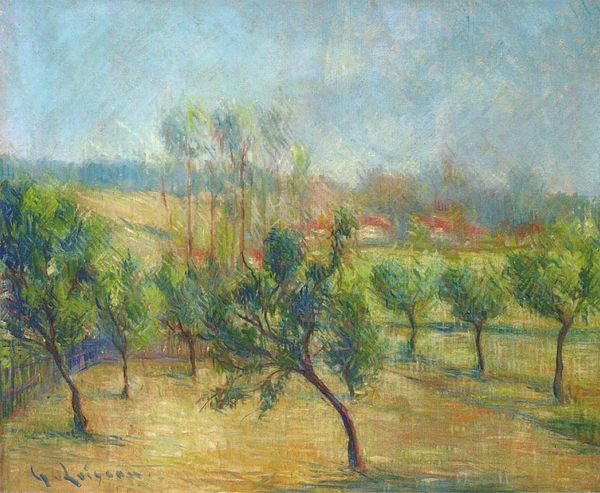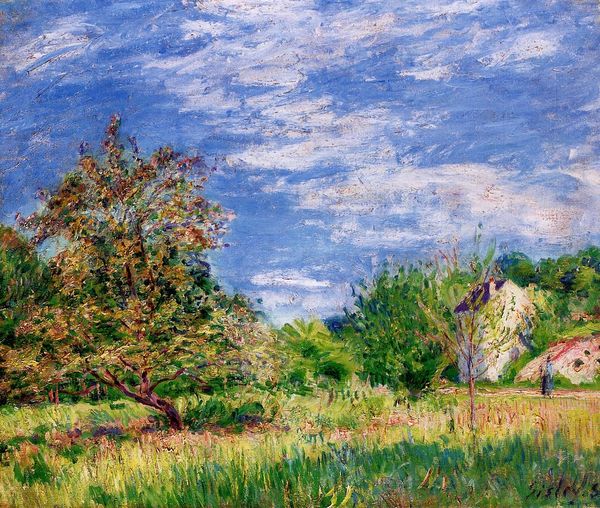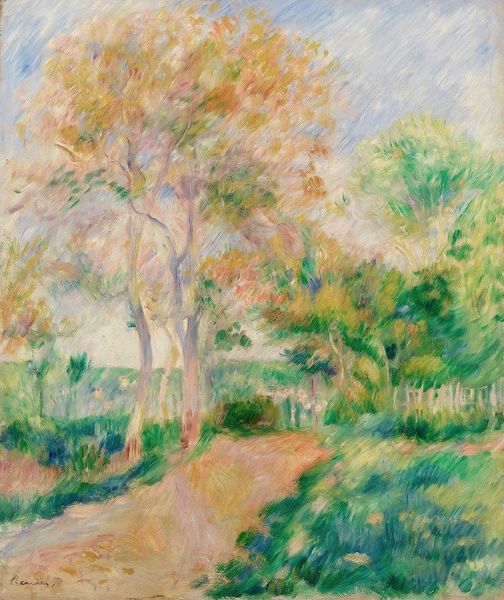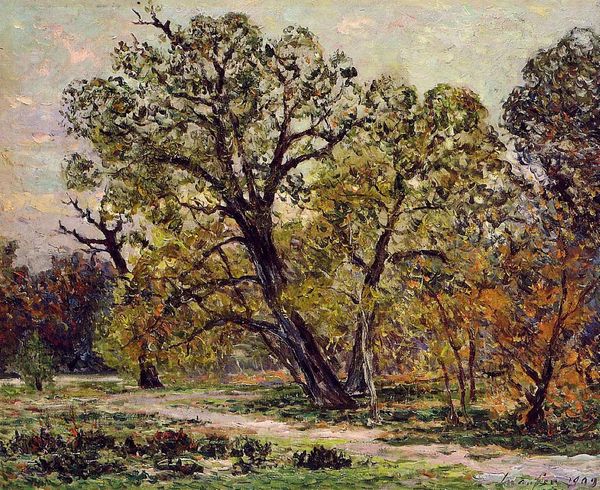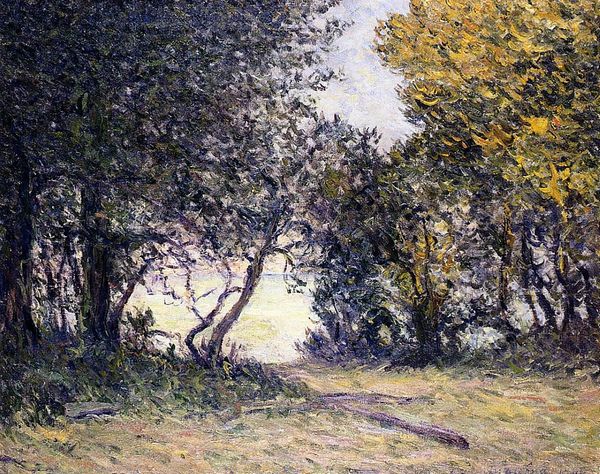
Copyright: Public Domain: Artvee
Armand Guillaumin captured 'Arbres En Île-De-France' using oil paints, a medium with a rich history, and a process closely tied to the industrial revolution. Oil paint’s materiality lends itself to capturing the textures and colors of the natural world. Guillaumin’s short, broken brushstrokes, applied wet-on-wet, are indicative of impressionistic techniques, which involved a relatively quick and direct method of working. This was partly enabled by the readymade paints available in tubes from the mid-19th century onwards. Compared to earlier eras, when artists carefully ground their own pigments, this new way of working allowed for more time to be spent outside, observing the effects of light and atmosphere. Here, we can see how the physicality of the paint—its viscosity, opacity, and the way it catches the light—contributes to our sense of the scene. The choice of materials, the act of painting en plein air, and the visual representation of the landscape are intertwined, telling a story that transcends a simple image.
Comments
No comments
Be the first to comment and join the conversation on the ultimate creative platform.
